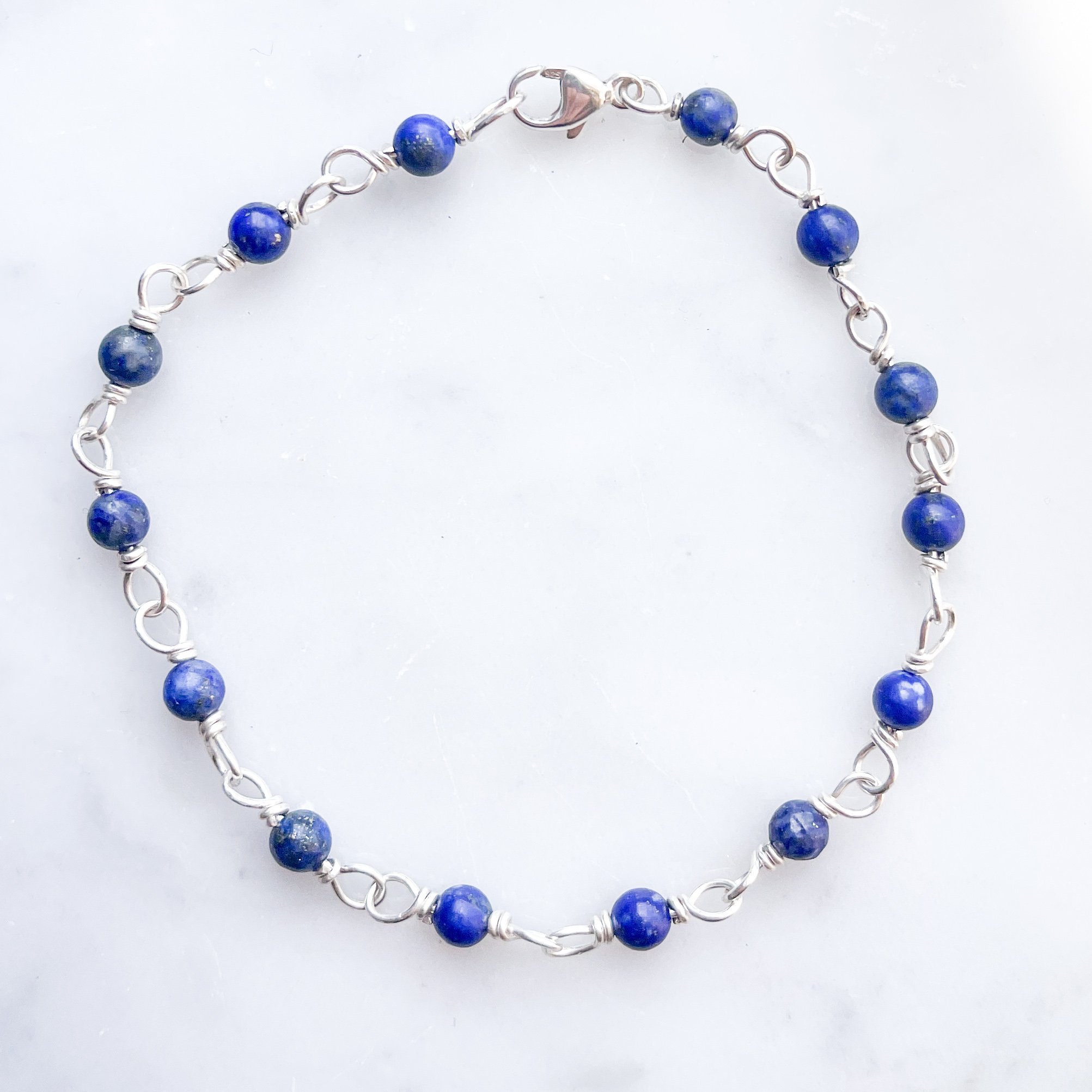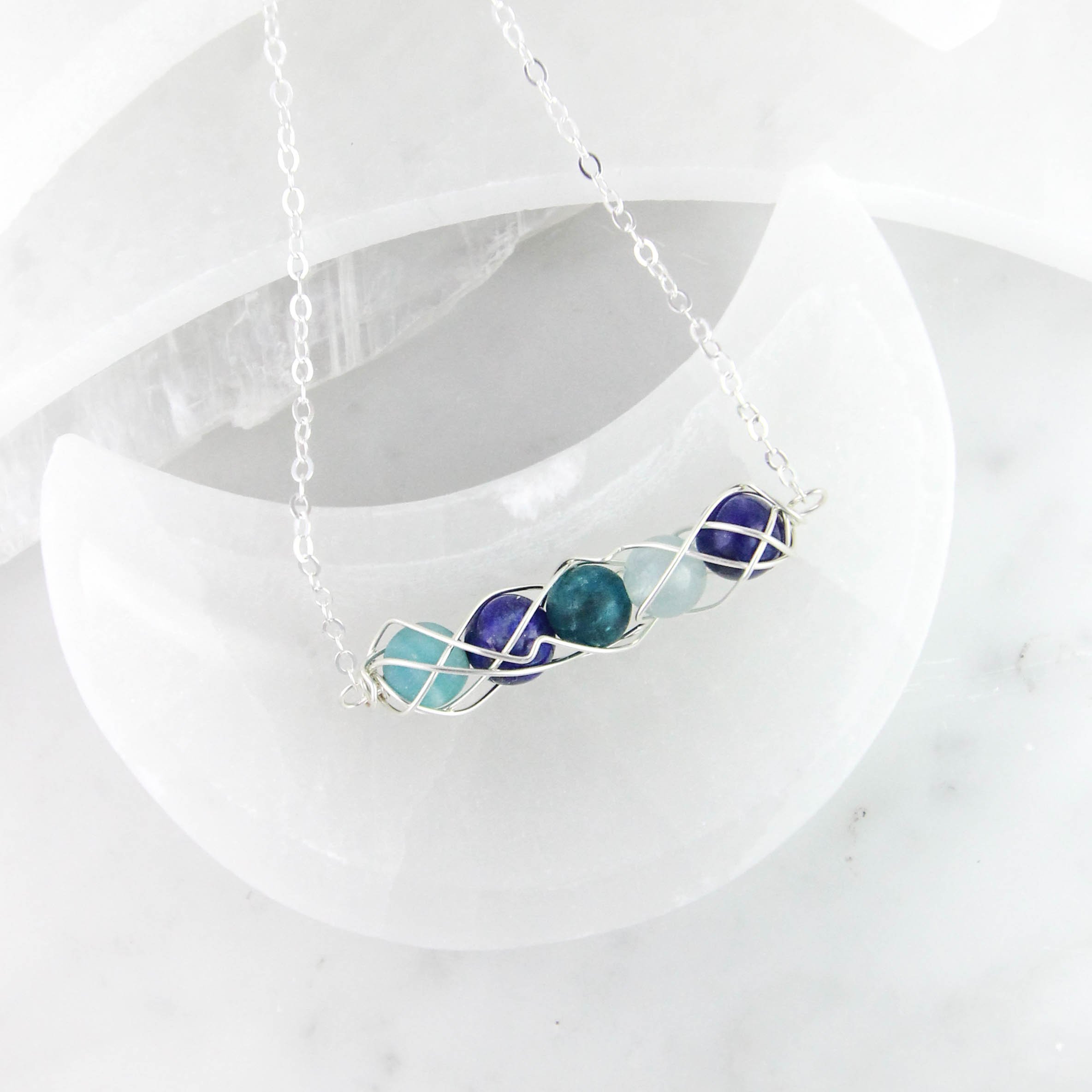Sapphire & Lapis Lazuli: September Birthstones & Their Healing Benefits
September carries a shift in energy—cooler days, deeper reflection, and a return to balance. It’s no coincidence that its two birthstones, Sapphire and Lapis Lazuli, mirror this energy perfectly. Both are stones of wisdom, clarity, and communication, long treasured by ancient civilizations and modern healers alike.
Let’s explore why these gems have captivated people for centuries and how you can work with their powerful vibrations today.
Sapphire: The Jewel of Wisdom and Tranquility
Sapphire, with its deep blue brilliance, has been cherished as one of the four precious gemstones for thousands of years. Its name comes from the Greek sappheiros and Latin sapphirus, both meaning “blue stone.”
Greek and Roman royalty often wore blue Sapphire to protect themselves from harm. Over the ages, Sapphire has remained a symbol of wisdom, calmness, and clarity. It’s also associated with the Throat Chakra, representing communication and self-expression. The gemstone’s water-energy brings a soothing influence, helping to balance energy flow.
Sapphire pairs beautifully with Spinel, a combination that has been cherished by kings and queens for centuries due to its protective and wise qualities.
Healing Properties of Sapphire
Mental: Calms the mind, sharpens focus, enhances communication.
Physical: Supports eye health, balances blood flow, eases overstimulation.
Emotional: Inspires creativity, restores emotional harmony, lifts inspiration.
Spiritual: Resonates with the Throat Chakra, aiding self-expression and inner truth.
Shop Sapphire Jewelry
Lapis Lazuli: Treasured in Religion and Art
Known as the “stone of heaven,” Lapis Lazuli has been prized for its dazzling blue with golden pyrite flecks for over 7,000 years. Cleopatra famously used Lapis Lazuli as eye shadow, solidifying its status as a valuable treasure. It also held spiritual significance, believed to bring enlightenment and guide souls to the realm of immortality.
During the Renaissance, Lapis Lazuli was ground into a fine powder to create ultramarine blue, the most beautiful and expensive of all blue pigments. Because of its high cost, this pigment was often reserved for painting the robes of Christ or the Virgin Mary.
Its energy is just as powerful as its history—encouraging truth, enlightenment, and soul-level awareness.
Healing Properties of Lapis Lazuli
Mental: Promotes self-awareness and clarity of thought.
Physical: Supports thyroid health, eases headaches and tension.
Emotional: Releases anger, fosters honesty, deepens compassion.
Spiritual: Opens the Third Eye, aligns with the Throat Chakra, enhances universal connection.
Shop Lapis Lazuli Jewelry
Sapphire & Lapis Lazuli: A Shared Legacy
Historically, these two stones were often confused—both called sapphirus in ancient texts. Many scholars believe that biblical “sapphires” were actually Lapis Lazuli, adding layers of sacred meaning to both. In the Bible, Exodus 28 describes the priestly garments and jeweled breastplate worn by Aaron and future high priests of Israel. The 12 gemstones on the Ephod’s Breastplate represented the 12 tribes of Israel. Many researchers believe that the "sapphire" stone mentioned in this context, which predates the Roman Empire's knowledge of true sapphires, actually refers to Lapis Lazuli.
Today, they remain united through their blue hues and chakra alignment, encouraging open communication, truth, and a serene sense of self.
Whether you wear them for their royal history, spiritual depth, or daily balance, Sapphire and Lapis Lazuli are perfect allies for September’s energy.
Sapphire and Lapis Lazuli both have their unique visual and vibrational characteristics, yet along with their intertwined histories, they also share a connection through their blue hues and their influence on the Throat Chakra. These gemstones encourage open communication, self-expression, and spiritual connection. Their captivating colors and powerful energies make excellent adornments for those born in September, and for anyone ready to invite more wisdom, balance, and serenity into their life.
Keep Learning
Crystals 101 Course
Demystifying Crystal Healing
After this email series, you'll have the knowledge and power to understanding and utilize their powerful benefits for your life!
Crystal Properties Guide
Discover their unique healing benefits
Learn more about 40+ healing crystals and their history, chemistry, chakra healing, recommended pairings and more.

















